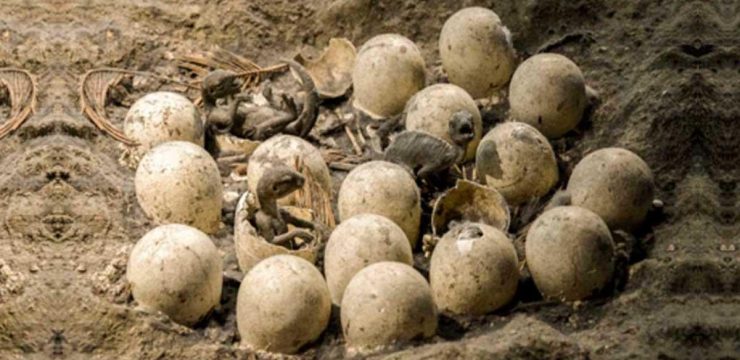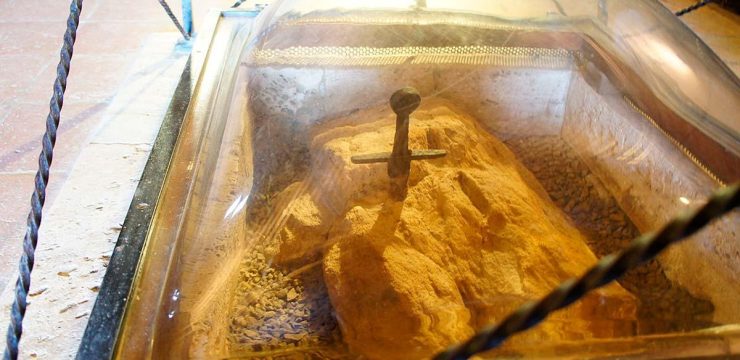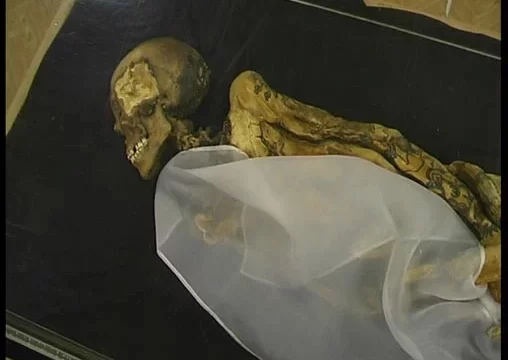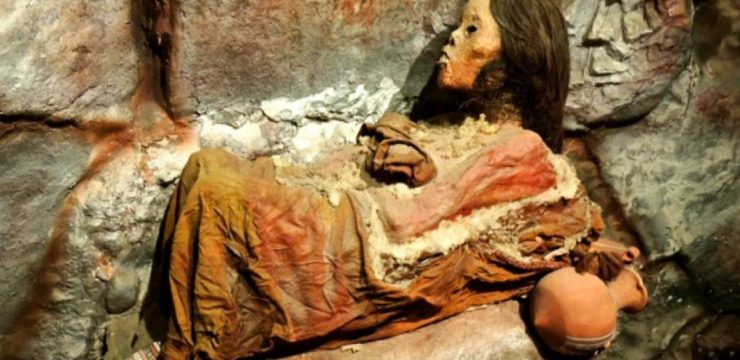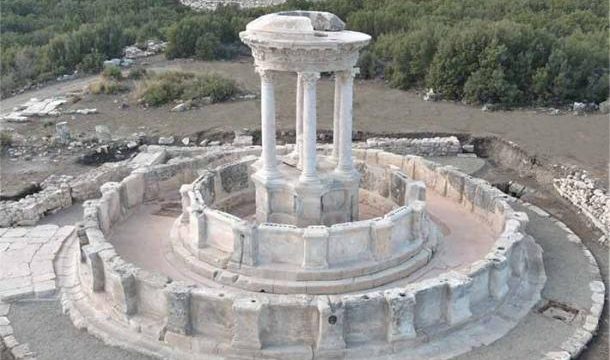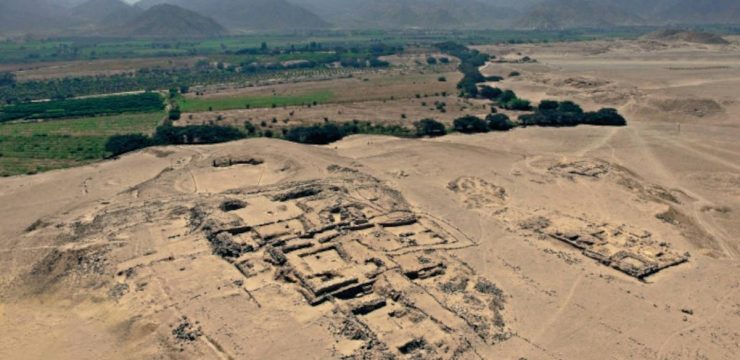In the sun-scorched lands of northern Iraq, where history whispers through the ruins of ancient empires, archaeologists have made an astonishing discovery that spans nearly three millennia. A team led by Pascal Butterlin of the University of Paris I Pantheon-Sorbonne has unearthed a colossal lamassu sculpture at the legendary site of Dur-Sharrukin. This majestic Assyrian guardian, with its imposing blend of bird wings, a bull’s muscular body, and a human’s dignified head, has finally emerged from its 2,700-year burial, captivating the modern world with its grandeur and historical significance.
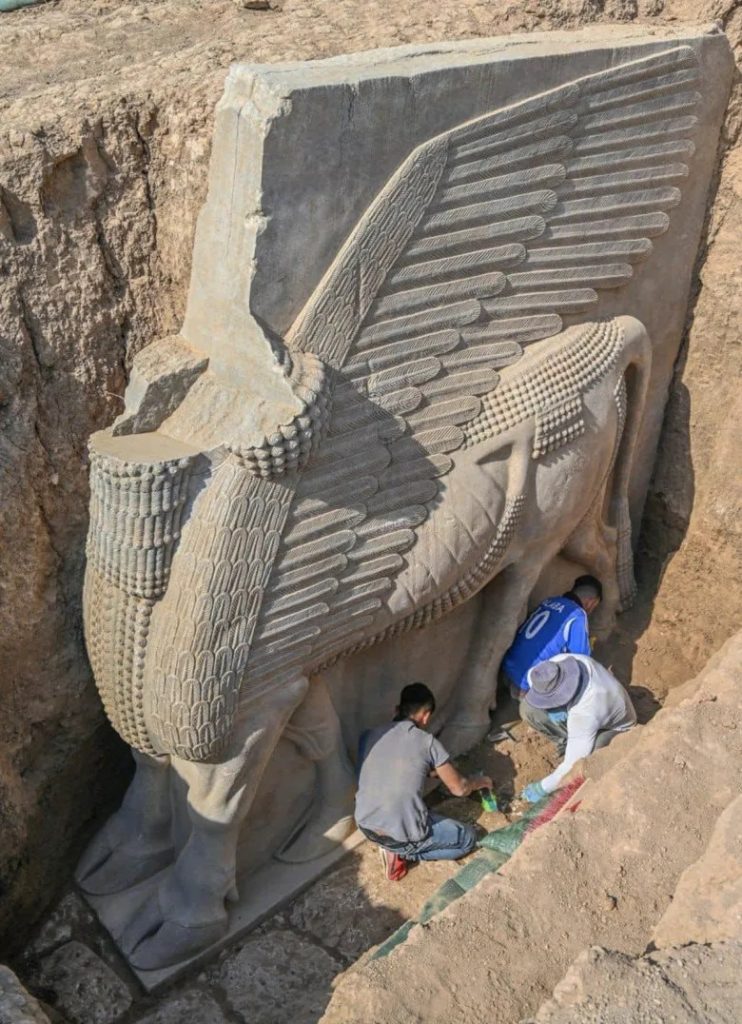
The discovery of this lamassu is not just a triumph of archaeology but a rare testament to the artistic mastery and cultural sophistication of the Assyrian civilization. Standing an impressive 12.5 feet in height and 12.8 feet in length, with an extraordinary weight of 18 tons, this sculpture showcases the technical prowess of ancient artisans. Despite centuries of exposure to the elements, political upheaval, and the relentless passage of time, the lamassu remains remarkably intact, its finely chiseled details still visible, hinting at the devotion and skill of the hands that carved it.
The lamassu was far more than a mere artistic creation—it was an emblem of divine protection and imperial power. In the days of its prime, this monumental figure stood proudly at the entrance of Dur-Sharrukin, the fortified capital built by the ambitious Assyrian king Sargon II. It served as a spiritual and physical guardian, believed to ward off both tangible threats such as enemy invasions and intangible forces such as evil spirits. Carved from a single massive block of stone, the lamassu was not only a feat of engineering but also a vital part of Assyrian architectural symbolism. The belief in supernatural protectors was deeply ingrained in Mesopotamian culture, and the presence of a lamassu at the city gates signified divine favor, stability, and unyielding strength.
Yet, the journey of this ancient sentinel through time has been fraught with destruction and loss. Dur-Sharrukin, envisioned as a grand imperial capital, was abandoned shortly after the untimely death of Sargon II. His successor, Sennacherib, chose to relocate the Assyrian capital to Nineveh, leaving Dur-Sharrukin to the mercy of time and neglect. As the centuries passed, the once-magnificent city fell into ruin, becoming a forgotten relic in the shifting sands of history. This abandonment made it an easy target for looters and treasure hunters, who saw these ancient wonders not as cultural artifacts but as commodities.
The lamassu itself suffered greatly at the hands of smugglers. Decades ago, its head was brutally severed, a tragic fate that befell many Assyrian sculptures throughout history. These desecrations were driven by the lucrative black market trade in antiquities, where stolen artifacts often find their way into private collections or museums, far removed from their original historical and cultural context. Fortunately, fragments of the lamassu’s severed head were later recovered, though they bore the deep scars of their violent removal. These wounds serve as a somber reminder of the ongoing threats to archaeological treasures and the urgent need for global efforts in heritage preservation.
The rediscovery of this lamassu marks a pivotal moment in modern archaeology. As experts meticulously analyze its structure, composition, and history, they hope to extract new insights into the artistic techniques and cultural traditions of the Neo-Assyrian period. The Assyrian Empire, which flourished between the ninth and seventh centuries BCE, was a powerhouse of military might, administrative sophistication, and artistic brilliance. Its architectural feats, including monumental palaces and elaborate reliefs, provide invaluable glimpses into one of history’s most formidable civilizations.
Beyond its academic value, the unearthing of this lamassu carries a profound symbolic weight. It is a reminder of the enduring legacy of ancient civilizations, whose influence still echoes through modern societies. The art, literature, and governance systems developed by the Assyrians laid foundations for future cultures, shaping concepts of kingship, law, and city planning. The lamassu, with its commanding presence and intricate craftsmanship, embodies the aspirations and beliefs of a people who sought to leave an indelible mark on history.
Moreover, this discovery underscores the pressing need for cultural heritage preservation. The Middle East, rich in archaeological treasures, has been a battleground for looting and destruction, particularly in recent decades due to armed conflicts and political instability. Many invaluable artifacts have been lost forever, making each rediscovered piece a victory against historical erasure. Archaeologists, historians, and governments worldwide must collaborate to protect these sites from further harm, ensuring that future generations can learn from and appreciate the civilizations that came before us.
As the lamassu stands once more in the light of day, it tells a story not just of the Assyrians but of humanity’s relentless quest to connect with its past. It speaks of artistic ambition, spiritual devotion, and the fragile nature of cultural memory. While it was once a silent guardian of an ancient empire, today, it serves as a beacon for scholars, history enthusiasts, and preservationists who seek to safeguard the world’s shared heritage. The reawakening of this long-buried colossus is a powerful testament to the resilience of history itself—no matter how deep the sands of time may bury the past, the echoes of great civilizations always find a way to resurface.
